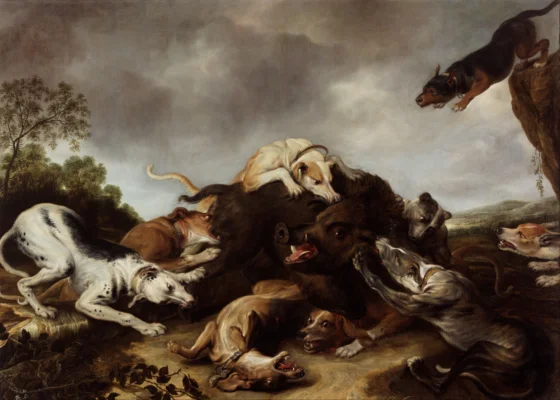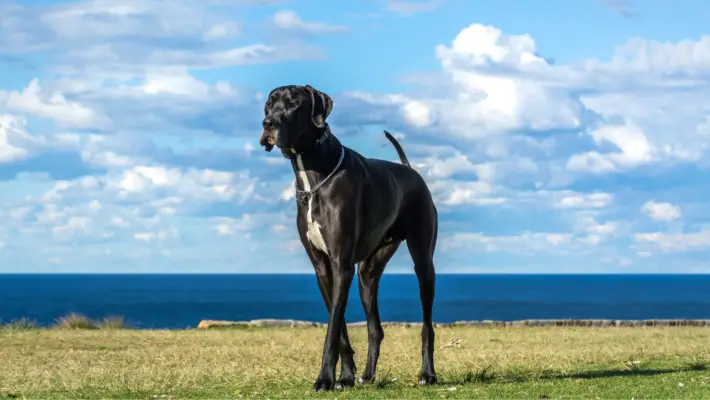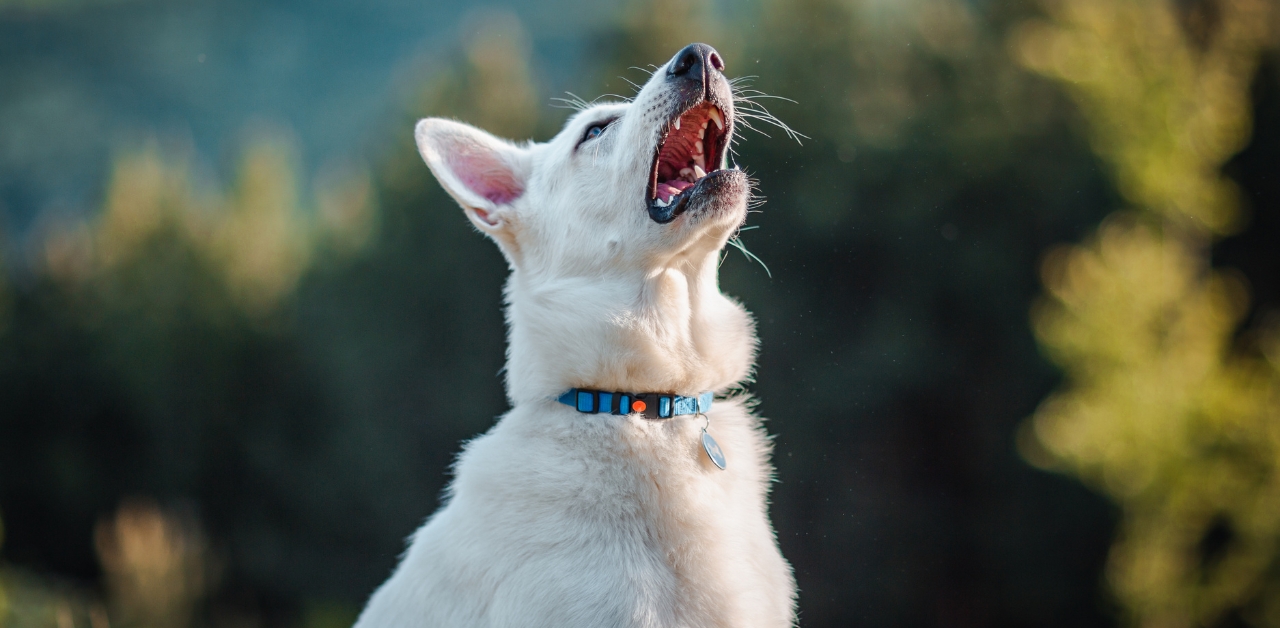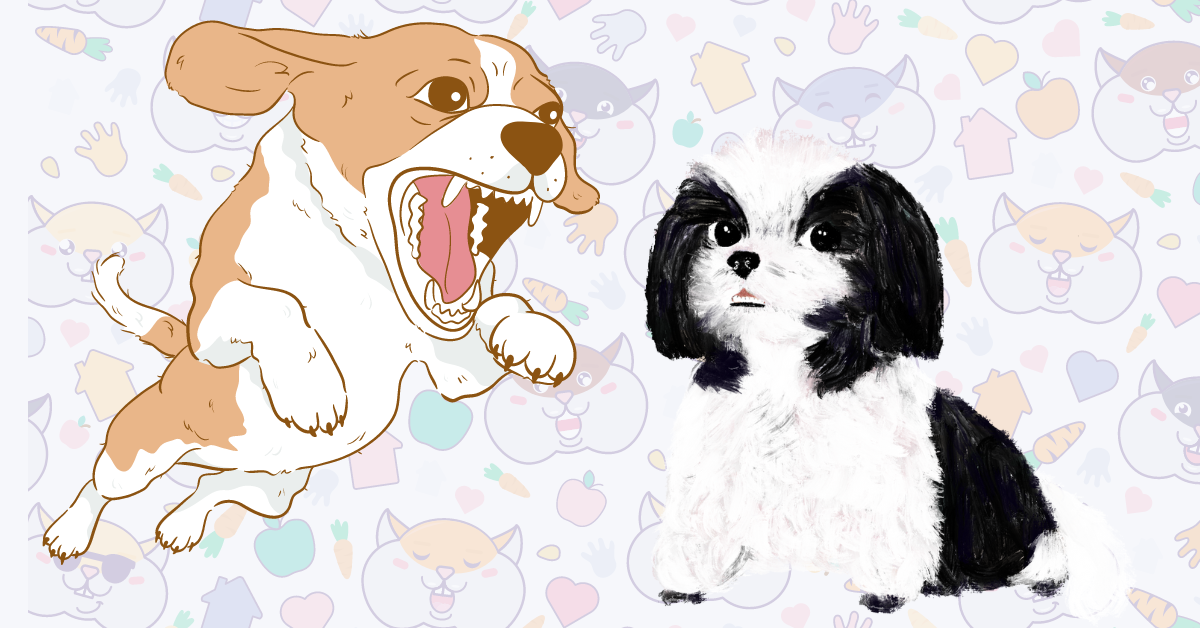The blue brindle Great Dane is truly a sight to behold. With their large, muscular frames and striking blue-gray coats marked by darker stripes, these gentle giants captivate all who cross their path. This blog post will explore the history, temperament, care, and charm behind this unique breed.
History
Great Danes trace their ancestry back over 400 years to Germany, where they were bred as boarhounds. Their large size allowed them to overpower wild boars during hunts. Over time, Great Danes transitioned from fierce hunting dogs to beloved companions and symbols of dignity.

The first Great Danes had coats of various colors, including brindle. The blue brindle pattern emerged when breeders introduced the genetic mutation responsible for the blue coat color. Combining the blue coat gene with the brindle striping pattern created the blue brindle Great Dane we know today.
Temperament
Despite their imposing presence, blue brindle Great Danes make incredibly loving and docile pets. They thrive when incorporated into family life, where they can feel part of the pack.
Great Danes are extremely sensitive and require regular positive reinforcement. Harsh training methods will damage their trusting nature. With early socialization and their family by their side, these dogs become famously loyal and devoted companions.
Their easygoing attitude makes Great Danes wonderful therapy dogs. Many hospitals and nursing homes use these gentle giants to lift patients’ spirits and provide comfort.
Appearance
Blue brindle Great Danes have short, sleek coats that showcase their muscular physique. They stand 28-32 inches tall at the shoulder and weigh between 120-200 pounds.
Their blue-gray base coat includes clearly defined black stripes in irregular patterns. Each blue brindle Great Dane’s markings are unique, like a fingerprint. These patterns can vary from subtle ticking to heavy horizontal stripes that wrap around the body.

Great Danes carry their tall frames with poise and elegance. Their regal stance reflects the breed’s nickname: the Apollo of Dogs. Eyes are warm and kind in expression. Ears are set high on the head and flop down by the cheeks when relaxed.
Exercise and Care
Despite their grand size, blue brindle Great Danes require only moderate exercise. A daily 30-minute leash walk and free play in a fenced yard meet their needs. These dogs cherish just being close to their family at home.
Great Danes are sensitive to extreme weather due to their short coat. Outside time should be limited on exceptionally hot or cold days. Their thin skin also provides little protection, so an indoor/outdoor blanket can prevent pressure sores where their bony hips meet hard surfaces.
Grooming is quick and easy. Their short coat needs only weekly brushing to remove dead hairs. Like all floppy-eared breeds, Great Danes are prone to ear infections if their ears aren’t cleaned regularly.
With their substantial frame also comes a substantial appetite. Great Danes need a high-quality diet specifically formulated for large breeds to support healthy bone development.
The Charm of the Blue Brindle Great Dane
The blue brindle coat pattern adds elegance and visual appeal to a noble breed. Great Danes carry themselves with grace and dignity but love nothing more than being close to their family. They forge intense bonds and make protective watchdogs. But their sweet, playful nature shines through at home.
Blue brindle Great Danes make unforgettable companions for experienced dog owners who can accommodate their substantial needs. They’ll impress you with their sensitivity, intelligence, and devotion each and every day. Are they interested in adding one of these special dogs to your life? Reach out to reputable local breeders to learn more.
Bringing Home Your Blue Brindle Great Dane
Once you’ve connected with a responsible breeder and selected the perfect blue brindle Great Dane puppy for your family, it’s time to start preparing for their arrival home. Here are some key tips:
- Puppy-proof your house. Keep cords, toxins, and fragile items safely out of reach.
- Stock up on high-quality large breed puppy food. Feed 3-4 small meals a day.
- Invest in a sturdy crate with plenty of room for an adult Great Dane. Crate train to ease housebreaking.
- Have a variety of toys on hand to keep your pup stimulated and entertained. Rotate to keep them interesting.
- Start training and socializing right away. Enroll in a puppy kindergarten class. Introduce your pup to new sights, sounds, people, and pets.
- Prep a schedule for providing ample potty breaks to prevent accidents. Puppies need to go out every 1-2 hours.
- Dog-proof your yard. Great Danes can easily leap or knock down typical fencing. Install tall, secure fencing.
Bringing home a Great Dane is the start of many years of companionship. With time, patience, training, and love, your blue brindle pup will mature into a well-mannered canine ambassador.
Source:










